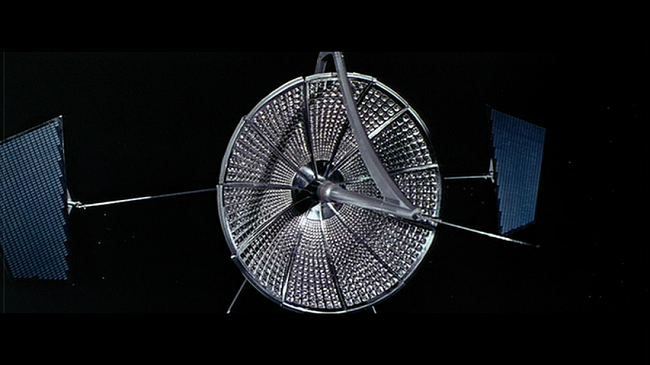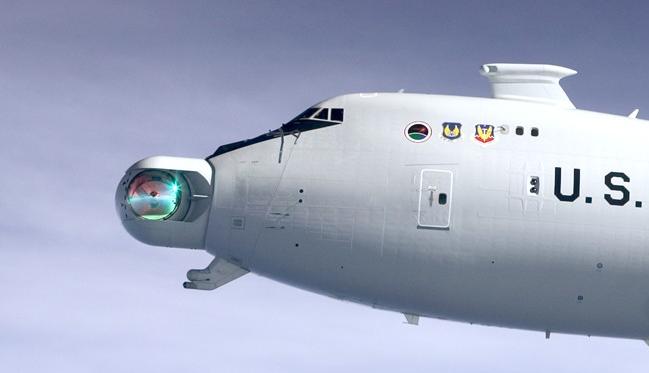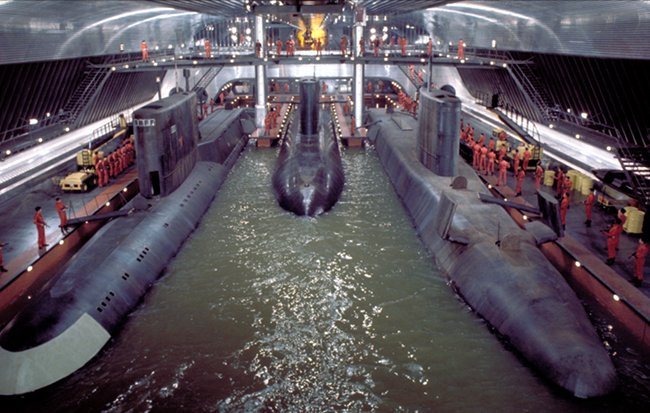Original URL: https://www.theregister.com/2012/10/26/bond_myths_busted/
Better luck next time Blofeld! Five Bond plot myths busted
What do you mean, 'why don't we just nuke them, boss?'
Posted in Bootnotes, 26th October 2012 11:00 GMT
Bond on Film Keep it simple – if only the villains of James Bond had learned that lesson in Evil Medical School. All too often, though, the Ernst Stavro Blofelds and Karl Strombergs of 007’s world succumb to their maniacal tendencies and plot ridiculously complicated plans to off Bond or take over the world, where a simple bullet or well-targeted nuke might have worked. Never mind respect for the laws of society - these Einsteins have no respect for the laws of physics.
Here, then, is The Reg’s busting of five of some of the most criminal plots or devices from the last 50 years of Bond:
Blofeld's bling blaster
Diamonds Are Forever had a lot going for it - primarily, the first resurrection of Sean Connery as our favorite 00 following the George Lazenby excursion of On Her Majesty's Secret Service. Of all the Bond films, though, it’s probably the most shamelessly daft and bears the least resemblance to the original novel as production company EON tried to put the Lazenby experience behind it. The central MacGuffin of the plot is an orbital super weapon, a laser created by Bond’s arch-nemesis Ernst Stavro Blofeld to destroy the world's nuclear arsenals allowing Blofeld to take charge. This is, implausibly, fashioned largely out of diamonds in order to justify Fleming's title.

Pimp my orbital laser cannon
The idea of orbital laser weapons in itself isn’t particularly mad when you consider that the US government at one point fully intended to deploy such things (or some kind of orbital directed-energy weaponry anyway) under the Star Wars program during the Reagan administration. That never happened, but the succeeding Missile Defence efforts did eventually send a functioning megawatt war-laser into the skies aboard a modified jumbo jet, dubbed the Airborne Laser and then Airborne Laser Testbed, though the project was finally shut down earlier this year.
Blofeld's answer to Reagan's Star Wars, for poorly explored reasons, required a vast array of diamonds: supposedly to help provide a means of directing and intensifying the beam of light produced by the laser.
Would a diamond-based laser be appreciably more powerful than, say, a normal ruby laser?
Potentially yes, but we're not quite there yet. For a number of years researchers have struggled to build diamond-based lasers but the problem is that natural diamonds contain impurities that lead to losses because the light will bounce off the imperfections, producing a distorted and less powerful beam.
Henry Lau, editor of physics.org, tells The Reg:
“Now, using artificially grown ultra-pure diamonds, progress has been made, promising very high powers and a wide range of applications including body scanners at airports and ultra-precision eye surgery."
While the diamonds might be improving, some very practical limitations stand in the way of actually putting the kind of optical laser envisioned by Blofeld to work.
To start with there are power levels. As all regular readers of Reg raygun coverage will know, the entry level for a combat grade laser is generally assessed as 100 kilowatts in the beam. To produce such a beam one will actually require say 500kW of power because laser beam generators are only about 20 per cent efficient. At the moment you're doing several times as much damage to your raygun with waste heat as you are to the enemy, and thus the weapon will probably melt or burn sooner than he will - so you need cooling or heatsink gear as well.

The late Airborne Laser Testbed (aka Airborne Laser). What an ICBM-busting raygun actually looks like.
In general then, even a relatively puny battlefield laser will need a massive diesel generator - think main battle tank or big-lorry engine - or something equivalent to power it, and a massive heat-management system too.
In space it gets a lot worse. To start with you probably need a monster Airborne Laser style megawatt-range weapon as a minimum at space ranges. One may note that at these power levels the option to use solid state laser tech is probably unfeasible, certainly right now. The ABL/ALTB laser generated its beam in a gas rather than a solid, to stop it melting itself. (Bin the diamonds, Blofeld.)
Then, diesel engines, turbines etc are no good in space: the mainstream power options for any sort of long duration space mission are nuclear or (more commonly) solar panels, though fuel cells as seen on the space shuttles might be OK if you only needed to fire a few shots. Solar panels aren't going to offer much of a rate of fire - the biggest solar panel array ever put into space, the one attached to the International Space Station, can achieve maximum output of only 200kW. That means that a two-megawatt beam of today's technology would need a major accumulator/pulse-generator rig to fire up at all if it were solar powered - even more kit! - and the zapper would spend around a minute charging up for every second blasting things.
So Blofeld would probably have needed to get a hefty nuclear reactor into space, which would arguably have been a lot more troublesome (and worthy of 007's attention) than simply nicking a few comparatively unimportant diamonds - which actually would have been no use anyway. And we haven't even gone into the great difficulties of somehow getting rid of all the laser's waste heat in the vacuum of space, where cooling is a major engineering challenge.
A final issue for visible-light lasers is obscuration. Rain, fog or clouds would render them largely useless. X-ray or Gamma-ray lasers, common sci-fi staples, could pass through clouds as might some infrared wavelengths: but such devices are not what Blofeld seems to have in mind judging by what’s on show in Diamonds are Forever.
Nul points, Mr Blofeld.
The Jet Pack
James Bond arrived late to the jetpack party. The 1966 Bell-Textron rocket belt used in Thunderball (and which popped up again in Die Another Day) has an ancestry that is, in high-tech terms, ancient. The cover of the August 1928 edition of Amazing Stories magazine depicted a character using a very similar device to slip the surly bonds of Earth.

The Jet Pack International pack: Fuel will run out in thirty seconds and counting
That device, though, is powered by some mad science from the fertile imagination of E E ‘Doc’ Smith. The first ‘real world’ jet packs came a little later when those freewheeling loons the Nazis dreamed up the Himmelstürmer flightpack in 1944.
It enabled the user to undertake short, trouser-burning hops over minefields or other obstructions rather than actually fly. Like a lot of Nazi scientific developments the Himmelstürmer was scooped up by the US as part of Operation Paperclip at the end of WW2 and added to America’s Cold War arsenal. Frankly, it wasn’t a whole lot of use and despite numerous attempts to develop more sophisticated versions the jet pack seemed doomed to remain a footnote in aviation.
But you can’t keep a good idea down. In sci-fi the jet pack never went away. And of course where sci-fi leads, savvy entrepreneurs follow. Jet Pack International builds a 800 horsepower piece of kit that updates the clunky Thunderball job. Jet Pack International’s device is a hydrogen peroxide fuelled model it claims is faster than any similar device: rated to carry an 180lb pilot at speeds of up to 80mph. Tested with a speed gun at Knockhill Racing Circuit in 2009 the pack secured the official world jetpack speed record by flying at 68mph.
Jet Pack International tends to demonstrate its device at air shows and film premieres. The company’s performance pilot Nick Macomber used one to fly the Olympic flame past the National Space Centre in Leicester in the run-up to this summer’s Olympics.
OK, so the technology is there in theory, but is it practical? The Jet Pack International machine has a flight time of about 20 to 30 seconds and you get to cover a quarter of a mile. In theory, that might be fine for a short hop up and over the wall of a Chateau but not much else. Also, it’s not like Bond could leap into one and take off without special training, says Troy Widgery, founder of Jet Pack International’s parent company Go Fast.
Widgery told the Register: “There are only maybe a dozen people qualified to fly one of these things right now. There are more people that have walked on the Moon. I’d say you would need in the region of fifty hours training before we signed you off to fly one of our jet packs solo.”
An ordinary pilot's licence is easier to get, and probably a lot more useful. With that in mind, you might be better off buying a small helicopter: the Robinson R2 comes at half the price, around $100,000. If you really do prefer the rush of the wind in your hair with your vertical take off, though, then Gen H-4 mini helicopter might be more your thing. This was offered at a mere $59,000 and could fly for an hour as opposed to the jetpack's rather useless 30 seconds. Alas, it's no longer available - but Q branch could doubtless whip one up in short order, or a Little Nellie style autogyro (as seen in You Only Live Twice) can easily be obtained and might be better for some missions.
But Jetpacks? Largely useless. Must do better, Q.
The Hungry Boat
The Spy Who Loved Me, with Moonraker, owes the least to the novel from which it takes its name. In that sense it’s one of the “purest” Bond adaptations – all film and little Fleming.
In The Spy Who Loved Me, megalomaniac aquarium enthusiast Karl Stromberg manages to unobtrusively modify a gigantic supertanker – the Liparus - to swallow entire ballistic missile submarines whole. His goal is to steal NATO and Soviet subs, triggering a war as each side suspects the other of a nuclear attack. While such a war might sound far-fetched, the idea of the Liparus is not quite so crazy - at least as far as size goes.

The hard bit was finding the totally un-findable submarines
The largest oil tanker ever built was the Seawise Giant, also known under various other names. Fabricated in 1979 by Sumitomo Heavy Industries at the Oppama shipyard in Japan it was, after some last-minute modifications, 458m in length with a draft of nearly 25m. By just length and size you might fit in as many as eight smallish ballistic missile submarines such as the Soviet 658 type (known to NATO as "Hotel class", famously featured in the movie K-19: The Widowmaker). You might conceivably cram in as many as four enormous 941 type Akula ("Shark") boats ("Typhoon class" to NATO: as seen in The Hunt for Red October). There would be potential stability issues with bow doors open and a large inner compartment flooded, but that’s not the tricky part.
First you need to find your missile sub. People don't put nuclear missiles on submarines at great expense for fun or because it's cool. They do it for just one reason: it makes the missiles just about impossible to locate, and thus just about impossible to take out with a pre-emptive strike. British and American attack subs did achieve a good deal of secret success during the Cold War by picking up Soviet boats as they left port and trailing them from very close range, but Stromberg didn't need any of that. He could apparently find a patrolling missile sub - even a quiet British one as opposed to a noisy Soviet - at will. He could probably have used this amazing ability to destabilise the balance of terror and trigger a nuclear war right off, without faffing around with any supertanker.
Not content with having done this, Mr Stromberg then moves on to further feats: starting by persuading two highly-trained naval crews, charged with a major part (or all, in the case of the Brits) of their nation's operational strategic nuclear deterrent, to surface and sit still for long enough for a slow-moving and far from nimble supertanker to line up and do all the fancy bow door engobblement part.
In the film, this paralysis is achieved by some sort of ECM/EMP device that disables the submarine’s command and control systems and forces it to the surface. Could such a marvel exist?
The Register spoke to a former Royal Navy marine engineer officer who served in two Polaris ballistic missile submarines and one Swiftsure class attack boat at the height of the Cold War. If anyone knows about mid-70s submarine technology, it’s him. We asked our expert – we are forbidden to name him by the Official Secrets Act – whether there was anything that could force a sub to the surface without breaking it.
“I struggle to see how an external source could prevent the crew of a submarine from using the steering, diving and propulsion controls manually to escape from the gigantic submarine-eating tanker,” our mariner said, “especially when that movie was made - submarines in those days didn't use digital computers at all!”
Transmitting any electronic signal through water would require ridiculous enormous amounts of energy even at very short range. Certain very low radio frequencies will reach round the world and penetrate water to shallow depths, but they can't carry enough power to do more than communicate with a sub - as opposed to interfere with it. Again, Stromberg has at a stroke achieved a world-shaking scientific and engineering breakthrough here.
The actual gulper-ship by comparison is a trivial matter. Floating dock ships certainly do work. They were invented during WWII to carry landing craft long distances; the British used two, Fearless and Intrepid, during the Falklands War in 1982. The modern civilian equivalent is the ships used to transport large floating objects, such as bits of oil rigs or warships that have carelessly run aground and wiped off their propellers.
These sealift vessels have a flat deck which is underwater when the ship floods down; the ship to be carried is floated into position above it and the carrier ship is then pumped out to come up under its cargo and lift it out of the water - all a bit conspicuous for a master criminal trying to twock a submarine.
However, flooding down when stopped to load or unload a vessel in sheltered waters is a very different prospect from a moving super tanker in open waters gulping down a stationary 8,000 ton submarine (or maybe 24,000 ton if we're talking about a Typhoon, though admittedly these weren't at sea until the '80s).
“The challenge of building a ship large enough without internal bulkheads to stow three objects 400 feet long, 35 feet wide and 55 feet high without collapsing under its own weight, let alone withstanding the stresses of a ship at sea, would I think defeat the finest modern engineering minds,” our informant says.
Back to the drawing board, Stromberg.
The Floating Bomb
In The World Is Not Enough the supervillain Renard, played by Begbie Robert Carlyle, and Sophie Marceau’s Elektra King somehow get the idea that introducing a sufficient quantity of weapons grade plutonium into the reactor of a Russian submarine will induce it to explode. The idea in the film is to use the submarine's destruction to make the Bosphorus radioactive, cutting off global oil supplies via any other route than the pipeline owned by King’s company.
To use plutonium as a weapon, you normally force it together almost instantaneously using conventional explosive until the critical mass is so compact that the neutrons it is peppering itself with can cause an extremely fast runaway chain reaction - so fast that huge, cataclysmic amounts of energy are liberated before the mass has a chance to melt or otherwise spread itself out. Then there’s a colossal explosion: this is how a 1950s-vintage atom bomb works.
Alternatively you can use an ordinary chemical explosion to scatter radioactive material far and wide, contaminating and poisoning everything within a radius dependent on factors like wind and rain - the so-called “dirty bomb.” Unfortunately the dirty bomb idea is largely bollocks - such a device could never put any significant piece of territory off limits for any serious amount of time - so you need a proper nuclear detonation, to really mess a place up and contaminate it.
Our former naval man explains the unfeasibility of the submarine-bomb method. Getting the plutonium into a submarine's reactor is a major engineering operation that would involve cutting a huge hole in the submarine's hull, a hull that is made of several inches of especially toughened steel.
Next you must lift off the lid of the reactor, which weighs around 50 tons. This is a job normally done only after about three months with the reactor shut down and the submarine inactive in a secure, well-equipped naval base to allow for dismantling without the residual heat from fission product decay melting the reactor fuel and causing a much more localised release of radiation.
After all that you must find space for some plutonium and re-assemble the lot before the reactor and its new fuel start up themselves and began an uncontrolled reaction. To create a problem with implications beyond the submarine's immediate vicinity - ie, a bomb-style explosion - you would need to somehow ram the whole reactor core down into a subcritical mass in a tiny fraction of a second, the way a warhead does.
The resulting instant blast, not to mention the likely fatal radiation doses sustained beforehand in pulling the reactor to bits by hand and furtling about in its guts, “might spoil even the most dedicated suicide bomber's day,” our former naval man tells us. So, again, not terribly feasible. One does note that the 671RTM Shchuka type ("Pike" class, "Victor III" to NATO, the sub specified in the movie) were equipped to carry certain nuclear-tipped weapons, potentially offering Renard a much simpler way forward (though removing any need to burgle plutonium out of old weapons silos ashore beforehand). However given The World Is Not Enough's post-Soviet, post-various-treaties setting, these would probably no longer be present.
Scratch off another one!
The Electromagnetic Pulse Weapon of Doom
Much of the plot of GoldenEye depends on us believing two things: there exists an orbital super weapon capable of delivering a devastating Electromagnetic Pulse (EMP) across a tightly targeted region of the planet below. Second, there exists a unique, special helicopter which is the only conveyance capable of withstanding this EMP's effects.

Those pesky Soviets and their secret space weapons
In GoldenEye, evil Sean Bean aka Alec Trevelyan plots to wipe the records of the London financial markets, using the eponymous spaceborne EMP weapon. This is in revenge for Britain’s WWII collaboration with Soviet leader Joseph Stalin, who murdered Trevelyan's Cossack people. Apart from him, that is - he grew up to become a Double O agent and colleague of Bond's before going rogue and setting out to bring the City to its knees.
First things first: the EMP. An EMP is an intense burst of electromagnetic radiation that can induce a destructive current pulse in electronic circuitry.
As the Federation Of American Scientists puts it:
The pulse can easily span continent-sized areas, and this radiation can affect systems on land, sea, and air… A large device detonated at 400–500 km (250 to 312 miles) over Kansas would affect all of the continental US.
The problem is that the only known way to generate a powerful EMP is to let off a nuclear explosion. Since the bulk of the planet blocks the pulse, it is only effective to line-of-sight, meaning that you need to let it off high up in space to cover a big area.
You might do this instead of just blowing up your target with the nuke for several reasons. Perhaps you only have one nuke but want to cripple an entire nation rather than just gutting a single city. Perhaps you don't want to directly cause actual deaths as such, just electronic destruction inevitably followed by chaos and disorder.
Neither of these seem very likely given Trevelyan's character and motivations - he'd seem more the type to just let off the nuke in or above London, so achieving a much bigger bodycount than an EMP plausibly could.
But perhaps the GoldenEye weapon has no option to re-enter the atmosphere. In that case it will be hard to limit its effects to just London: perhaps this is no ordinary nuclear-bomb EMP but some kind of special directional job not involving a nuke blast. Unfortunately this means it doesn't exist and doesn't work - people have been predicting sub-nuclear EMP bombs for decades but they are no nearer service than fusion reactors are.
Basically the orbiting GoldenEye weapon is bunk - if the Soviets or Russians wanted to carry out an EMP strike they would simply launch a normal warhead to the right place atop a normal ICBM or a space launch rocket (for a higher-altitude wide area hit). They wouldn't waste resources and violate treaties by parking weapons - nuclear or conventional - in orbit, which requires a much bigger and more expensive rocket than simply lobbing the same payload on a suborbital ballistic trajectory to the detonation point. And any such warhead/satellite, if it was deployed into space semi-permanently for some reason, would scarcely need a converted shopping centre and the Arecibo radar telescope to command it either.
But what of the EMP-proof helicopter, another key GoldenEye plot element? An EMP wouldn’t directly affect the aerodynamics of a chopper, but modern aircraft are generally dependent on electronics such as fly-by-wire or Full Authority Digital Engine Control (FADEC) to stay airborne. Contrary to what one reads sometimes in the IT press, FADEC has become an near important safety feature on helicopters as it manages power to the engine freeing the pilot to concentrate on the other demanding aspect of controlling the main rotors' tilt, tail rotor and main rotors' pitch. FADEC is also near-universal on fixed-wing aircraft.
GoldenEye specifically features the Eurocopter Tiger, debuted by its manufacturers in 1991 as a European rival to the well-known US Apache attack helicopter (though Tigers didn't reach actual front-line useability until over a decade later).

Yoink! Saucy deviate Xenia Onatopp snatches a Frenchman's chopper
A stolen Tiger is used by villains Ourumov and Onatopp in the film to fly into and out of the Severnaya ground control station in deepest Russia, in order to snitch the GoldenEye device's digital keys and then make off despite the effects of an evidence-expunging EMP blast from a GoldenEye weapon aimed at the ground station (which also fries the circuitry of all satellites with a view of the area in the process, suggesting that it isn't very targetable or directional after all).
The Tiger’s airframe is in actual real-world fact built to resist EMP effects, using a copper and bronze grid and copper bonding foil to furnish a Faraday cage around the electronics inside. The machine's resistance to EMP, in addition to lightning, is one of manufacturer Eurocopter’s marketing boasts. (Though Eurocopter don't mention the other special feature of the movie Tiger: ejection seats, never found on helicopters in the real world as rotor hubs are quite prone enough to come apart disastrously without building this in as a feature.)
In the respect of EMP hardening, however, the Tiger is far from unique. Most military aircraft, warships, comms gear etc of Cold War lineage and later have EMP hardening to some (usually classified) degree, more because they were designed to survive on a World War Three battlefield with nukes potentially going off all over the place than because of any specific worry about EMP strikes from space. Various more easily obtained Russian aircraft could have done the job for the villains, and the Russian fighters responding to the Severnaya attack - which are knocked out by the EMP in the movie - would actually have been fine (remember, such jets could also drop nuclear weapons without EMPing themselves out of the sky!)
And indeed, in the movie it would have been perfectly possible to fly or otherwise travel to Severnaya aboard an unshielded civilian aircraft or vehicle and park it underground, in a hardened aircraft shelter or in a steel shipping container or similar, then head out again after the EMP. Alternatively, given that the GoldenEye strike in the movie plainly didn't affect all or even much of Russia, there would seem little reason not to just use an ordinary civilian copter and wait until it was clear of the danger zone before EMPing Severnaya.
Any of those plans would seem a bit more practical than sexually entrapping and murdering a Canadian admiral in order to assume his identity and penetrate a sales demonstration event aboard a French frigate, preparatory to stealing a Tiger off the vessel's flight deck and then somehow smuggling it into the heart of Russia. (Just flying it there would be rather troublesome to say the least. Assuming the Tiger could somehow evade all radar tracking - while still flying high enough to avoid being identified and reported repeatedly from the ground - and thus elude pursuing fighters with much higher speed, it would still have to land for refuelling at least twice before getting clear of Europe.)
This is another offering from the Swiss Cheese school of plotting. Come to think of it, there may be a reason why "movie plot threat" is well known to mean in general "a silly threat".
But none of that means the movies weren't great entertainment. ®